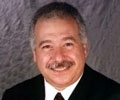 I’ll let you in on a little secret: I read science fiction. Not exclusively, but I do enjoy the techie stories of authors like Jerry Pournelle, Larry Niven, and Robert Heinlein. They blend stories about people and technology with an optimistic outlook about what’s in store for us. The characters that populate their stories are problem-solvers, not introspective whiners who take every opportunity to say how bad life is and there’s no hope. Their characters go places and get things done.
I’ll let you in on a little secret: I read science fiction. Not exclusively, but I do enjoy the techie stories of authors like Jerry Pournelle, Larry Niven, and Robert Heinlein. They blend stories about people and technology with an optimistic outlook about what’s in store for us. The characters that populate their stories are problem-solvers, not introspective whiners who take every opportunity to say how bad life is and there’s no hope. Their characters go places and get things done.
One of the authors who led this school of optimism in the future of technology was E.E. “Doc” Smith, an engineer by training and an author of “space opera” stories by avocation. His Skylark and Gray Lensman novels featured heroic protagonists who could whip up rays of the sixth order — whatever those were — that could drive space-ships [as he called them] at about a million times the speed of light and burst planets like toy balloons.
In the Skylark series, super-genius man-of-action Dick Seaton, his wife, his buddy, and his buddy’s wife flit around the galaxy defending it from the monstrous Fenachrones bent on conquering the universe — nothing like having big plans after all — and defending themselves from their arch enemy Marc “Blackie” DuQuesne.
This is all very interesting, you might say — or might not, depending on your taste — but what has this to do with machining?
I’m setting the groundwork for a passage from Smith’s novel, “Skylark Three.” In the book, Seaton needs the help of the Osnomians, an advanced civilization of green humans, a million years old and composed of geniuses that make Brainiac seem like a slow learner.
Seaton enlists their aid in building a super-duper space-ship with which to defeat the Fenachrone.
“Building the generators,” Smith wrote back in 1930, “would have been a long and difficult task for a corps of Earthly mechanics and electricians, but to Seaton it was merely a job. The ‘shop’ had been enlarged and filled to capacity with Osnomian machinery; machine tools that were capable of performing automatically and with the utmost precision and speed almost any conceivable mechanical operation. He put a dozen of them to work . . . ”
Automatic machine tools capable of performing by themselves to “utmost precision” were as pie-in-the-sky for an engineer in 1930 as were starships. This was an era straight out of “The Bull of the Woods” where some machine shop tools still were powered by leather belts from a central motor.
Yet, a mere 30 years later, NC and CNC machines were entering the shop environment. Today, 80 years after Doc Smith posited the need for a million-year-old culture to produce automated machining, metalworking machines that can create parts from electronic drawings are within the reach of almost any machinist willing to invest the price of a new automobile.
What’s even more remarkable is that we now have machining technologies even science fiction couldn’t have predicted: electrical discharge machines, laser cutters, waterjets, plasma cutters, stereolithography, and laser sintering. Not to mention technologies now only in development.
Despite the current economic woes, I believe we live in a time that will be seen as the golden age of machining.
-Pete Nofel-







I work in a shop which employs equipment ranging from a Brown and Sharp horizontal mill that originaly ran off of a gang drive (and has no ‘Y’ axis movement), to a CNC Hardinge Bridgeport vertical machining center, our mainstay machine. We service and manufacture machinery that was first conceived in the 1850′s and we’re still developing new equipment. We have quite a spectrum to work with and I can agree that there’s a bright future in store for machinests today.